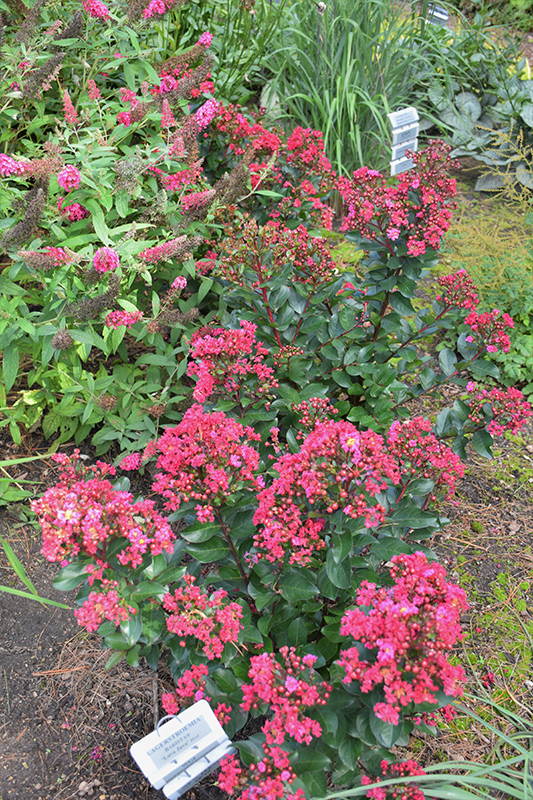>> Home
Barista® Lava Java Crapemyrtle
Lagerstroemia 'Lava Java'
Height: 3 feet
Spread: 3 feet
Sunlight:
![]()
![]()
Hardiness Zone: 7
Other Names: Crape Myrtle, Crepe Myrtle
Group/Class: Barista Collection
Brand: Walters Gardens
Description:
This exciting ornamental shrub or small tree produces volumes of fiery, frilly, magenta-rose blooms in late summer; a captivating focal point for the garden or border; mature heights will be taller in southern climates; blooms on new wood
Ornamental Features
Barista® Lava Java Crapemyrtle is clothed in stunning panicles of fuchsia frilly flowers with rose overtones and yellow anthers at the ends of the branches from late summer to early fall, which emerge from distinctive dark red flower buds. It has attractive dark green deciduous foliage. The glossy oval leaves are highly ornamental and turn red in fall.
Landscape Attributes
Barista® Lava Java Crapemyrtle is a dense multi-stemmed deciduous shrub with an upright spreading habit of growth. Its relatively fine texture sets it apart from other landscape plants with less refined foliage.
This is a relatively low maintenance shrub, and is best pruned in late winter once the threat of extreme cold has passed. It is a good choice for attracting bees to your yard, but is not particularly attractive to deer who tend to leave it alone in favor of tastier treats. It has no significant negative characteristics.
Barista® Lava Java Crapemyrtle is recommended for the following landscape applications;
- Accent
- Mass Planting
- Hedges/Screening
- General Garden Use
Planting & Growing
Barista® Lava Java Crapemyrtle will grow to be about 3 feet tall at maturity, with a spread of 3 feet. It has a low canopy. It grows at a fast rate, and under ideal conditions can be expected to live for 50 years or more.
This shrub does best in full sun to partial shade. It prefers to grow in average to moist conditions, and shouldn't be allowed to dry out. It is very fussy about its soil conditions and must have rich, acidic soils to ensure success, and is subject to chlorosis (yellowing) of the foliage in alkaline soils. It is highly tolerant of urban pollution and will even thrive in inner city environments. This particular variety is an interspecific hybrid.

